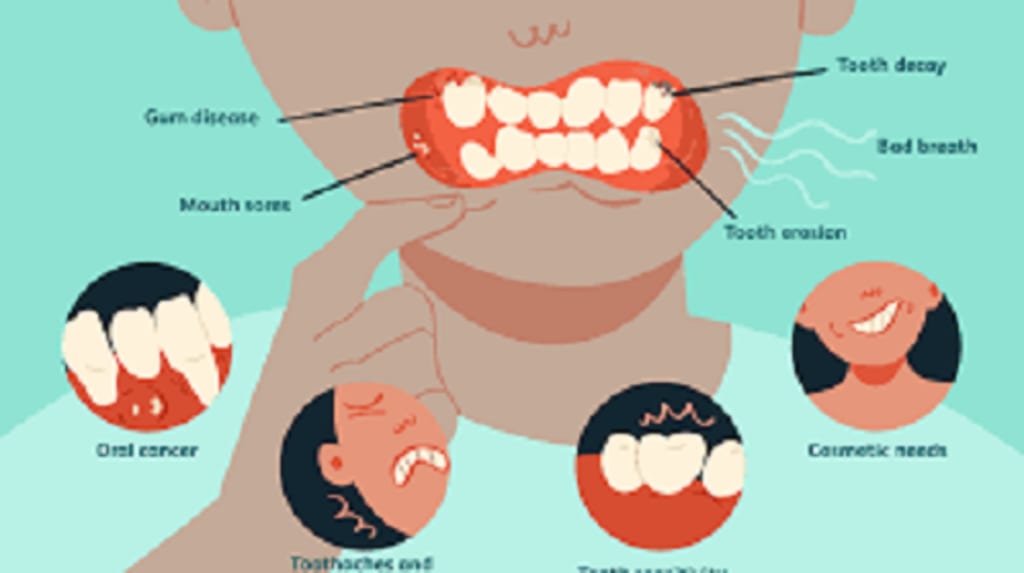
There is a case that report describes the absence of periodontitis in 10-year-old girls and 6-year-old boys treated with soft dentures instead of traditional mobile appliances. Use alginate material to make an impression and then send it to the bite lab to make a flexible denture. Before testing, immerse the flexible denture in 90 ° C water for 1 minute and then cool. The clinical work of pediatric dentistry focuses on the prevention and treatment of various oral diseases in children and adolescents, as well as on the management of oral health from early childhood. The goal is to establish normal teething from the eruption of the first baby tooth to the last good bite.
ECC and malocclusion
Are one of the most common chronic childhood diseases, and tooth decay and its complications are the most common reasons that children seek dental care. The high incidence of dental caries in children is attributed to poor nutrition and oral hygiene, as well as the anatomical characteristics of primary teeth. According to the results of the third national oral epidemiology report, the prevalence of dental caries among 5-year-old children in China is 66% and the rate of caries, missing, and complete teeth is 3.5.
Abnormal development of teeth and malocclusion
Gingival hyperplasia is another tooth, tooth, or toothed structure. These teeth or teeth have been pushed out or have remained upright. To a normal number of teeth. Excess teeth can be single or multiple, unilateral or bilateral, and can be seen in one or both jaws. They can develop in any area of the dental arch but are most commonly found in the anterior area of the maxilla. They may erupt normally, remain stressed, stand on their stomachs, or have abnormal germination pathways.
Oral habits and malocclusion
Digit sucking
it may use other activities instead. It includes thumb and finger sucking and can change the development of dentin bones, if it persists for a long time it will lead to a malocclusion. People with this oral habit often experience bite marks and deformed fingers. Thumb sucking moves the tongue to a lower position. Changes in the balance between the outward thrust of the tongue and the inward movement of the cheek muscles can affect the upper arch, often resulting in upper incisors and protrusion of the anterior jaw, atypical swallowing, anterior bite, and posterior bite.
Tongue thrust
A tongue thrust is a condition during swallowing in which the tongue is in contact with any teeth before the molars. The correlation between this habit and malocclusion can be mutual, which means that the habit of the tongue can cause malocclusion and the malocclusion can contribute to the habit. Dixit UB noted that compared to children without tongue thrust, children with tongue have weak lips, a tendency to incisors in the upper jaw, breathing habits, mentally active muscle activity, open bite, and a tendency to cleft lip.
Lip habits
Lip habits include licking or biting the lips or cheeks, with biting of the lower lip being the most common. Patients with suction of the lower lip can cause a strong contraction of the muscles of the eyes and the meningeal muscles of the lower lip, leading to tilting of the upper teeth and receding of the lower teeth, over-injection, wide distribution of the upper jaw, irregular mandibular incisors and deep grooves for the lips.
Habitual mouth breathing
Habitual mouth breathing is usually caused by obstruction of the nasal airways caused by various diseases, such as adenoid and tonsil hypertrophy, rhinitis and sinusitis, and turbinate hypertrophy. Changes in the way you breathe from nose to mouth can affect the position of the tongue and jaw and damage the balance of the oral and perioral muscles. Oral ventilators may present with anatomical abnormalities (eg, open bite, clockwise rotation of the jaw, increased anterior and lower facial height, narrow upper jaw, and deeper upper jaw). Children with enlarged tonsils can extend the jaw to ease breathing difficulties.
One-sided chewing habit
One-sided chewing habit is a phenomenon in which the individual chews only on one side, which may be due to severe tooth decay or pain caused by discomfort due to residual root tips or severely decaying crowns on the unused sideHypertrophy on the chewing side and atrophy on the unused side can cause facial asymmetry, unilateral crossbite, and lower midline deviation. Now a days there are many treatments like hybrid denture is the only treatment in dentistry that provides total replacement of teeth and permanently stays in your mouth. Also, it is excellent in aesthetics, resulting in a dramatic improvement in the quality of life of patients.





Comments
There are no comments for this story
Be the first to respond and start the conversation.